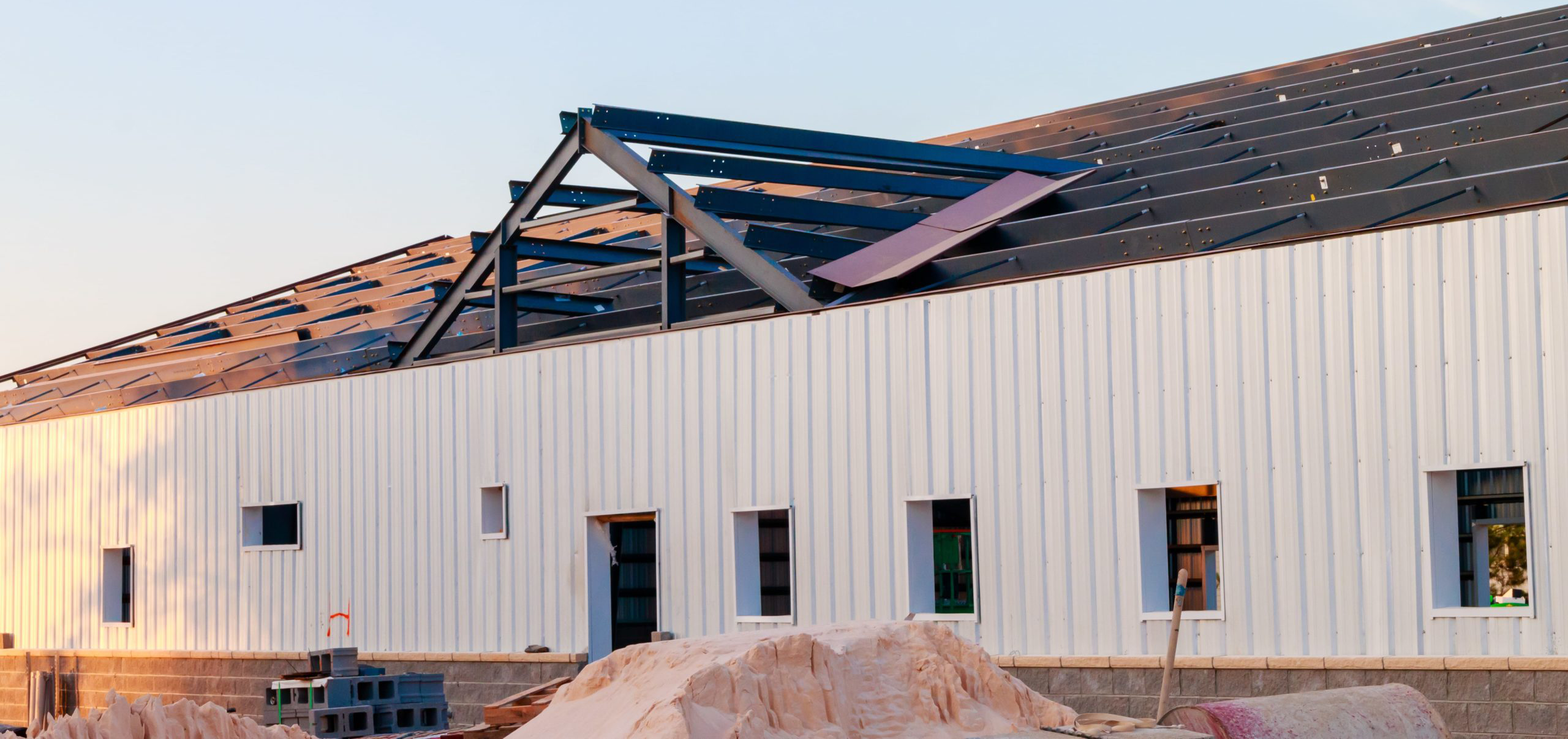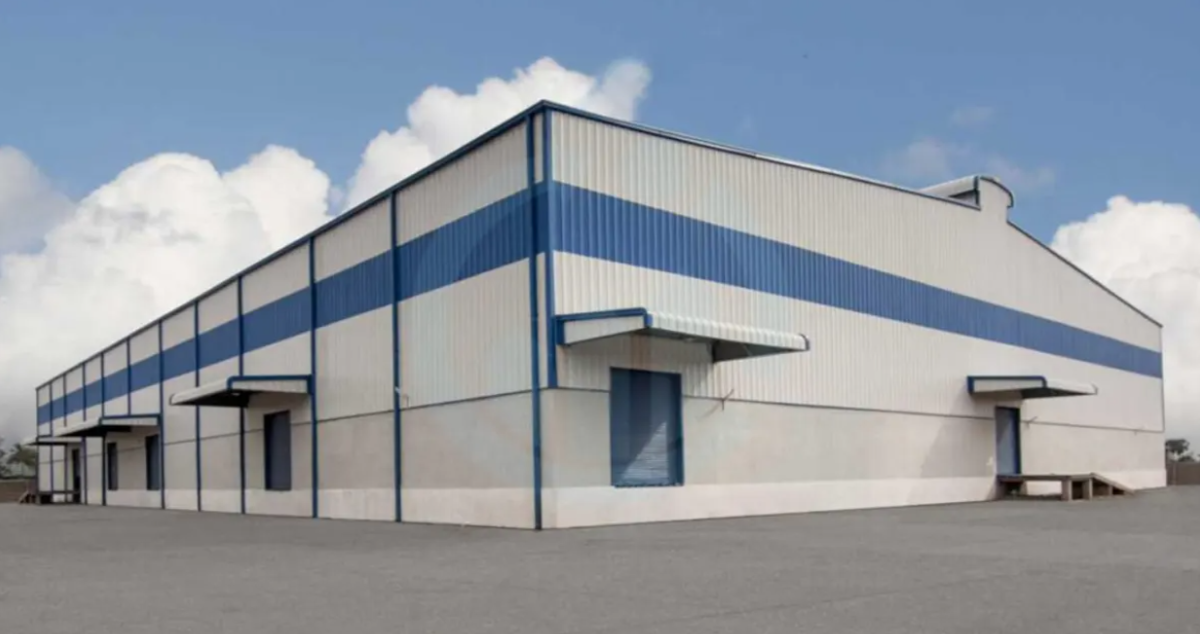
The Customization Opportunities of a Prefabricated Building

When some think of prefabricated buildings, they may envision a standard-dimensional building with no frills. Modern prefabricated structures are designed and built to fit many applications and requirements.
Prefabricated steel framing structures also present immense possibilities for customization inside and out. Whether it’s large barn doors for easy entry and exit or specific interior elements for a client’s manufacturing business, prefabricated buildings are an excellent choice for many customers.
What are Prefabricated Buildings?
Prefabricated buildings are any structure that has been manufactured and partially or fully assembled in a factory-type setting. Some prefabricated buildings are made of modular pieces or parts, quickly allowing for size variations. Some buildings are also entirely constructed and shipped to their foundation site.
Prefabricated buildings usually use durable and versatile materials such as steel, concrete, or fiberglass. These solid and long-lasting materials allow consumers to construct buildings quickly at a reasonable cost.
They are also flexible in their applications for different industries and organizations. Buying with prefabricated parts offers consumers a durable and cost-effective alternative to traditional construction, which can be fully customizable on the interior.
Are Prefabricated Buildings Good in 2023?
Increasingly, businesses and organizations are considering prefabricated construction for their building needs. These versatile structures have the added benefit of being constructed in the age of technology. From precise engineering to specific manufacturing and construction processes and standards, computers, and software have transformed the production methods of prefabricated buildings.
The growth of pre-engineered steel building market is expected to continue to grow at a steady rate for the next decade. These buildings are perfect for agricultural and equestrian uses, as well as for office spaces and commercial or industrial manufacturing facilities.
They can equally be used for residential spaces with all the refinements necessary for comfortable living. Plus, their durability means they’re an excellent investment as commercial or residential rental properties. The possibilities for pre-engineered steel buildings are up to the consumer’s imagination.
4 Advantages of Prefabricated Buildings
When considering a building or constructing a prefabricated or pre-engineered building, some distinct advantages should be highlighted. It’s also important to discuss your real possibilities and personal expectations for a pre-engineered steel building. Discussing your plans with professionals usually garners excellent insight and can help refine what you need in a newly constructed building.
Let’s examine four of the most notable advantages of choosing prefabricated or pre-engineered structures.
Time Saving
Using prefabricated or pre-engineered pieces and parts for building construction can dramatically reduce the overall time required for a project.
Designing the building is one of the first steps. Although thought and purpose should be applied to the design, many structural dimensions will already exist as set parameters. Designing the actual structural pieces has already been accomplished. The customer mainly considers how they’ll use the space and how big of a building they’ll need.
Next comes the ordering and manufacturing of the necessary parts. Some connecting fittings may already exist, but much of the structural framing and paneling will be manufactured upon receipt of the order. Once prepared, the entire structure, broken down into individual parts, can be shipped to the site. From there, a construction crew begins to assemble the prefabricated building.
The process moves quickly with experienced builders who understand the schematics. Many final steps consist of following explicit instructions and properly fitting all the pieces together.
Although the entire process, from start to finish, can take anywhere from 6-8 months to complete, that is an exponentially faster process compared to traditional wood frame or concrete construction of an equivalent structure. Of course, the completion timeline varies, depending on the size of the structure being built.
One last consideration for time management can be attributed to the durability of materials, like steel. Less corrosion or degradation means less time handling repairs, repainting, or replacing parts.
Environmentally Friendly
As mentioned, prefabricated structures represent a new wave of durability within construction. This durability leads to a more sustainable method for using natural resources and energy. With steel, for instance, prefabricated metal structures will last as viable and usable buildings for decades.
Prefabricated metal buildings can provide an environmentally sustainable product without the need to construct new buildings as often or oversee numerous replacements and repairs. Their durability also means they can be deconstructed for transport or relocated fully intact to a new location or for a different application. Prefabricated steel buildings can even be upcycled more than once,
Plus, by consolidating much of the labor and machinery needed for prefabricated manufacturing, these buildings also reduce the carbon footprint of each new structure. The actual construction process is also streamlined, so there are fewer time and energy resources needed for the build process. Prefabricated steel represents a more efficient and environmentally sound approach to new construction.
Economical
Prefabricated steel buildings are advantageous in cost in several ways. To begin, they have been engineered and designed to reduce the amount of waste or overage a contractor or builder will expect when creating a job estimate. For traditional construction, a percentage of materials are built into the project’s cost.
Overage percentages, usually around 10%, are the amount of unused or unusable materials that will end up in the trash during construction. These material overages are considered part of the cost of building and always add a baseline cost to all jobs. With pre-engineered, prefabricated buildings, these overages can be reduced to minimal amounts since the structures arrive at the job site ready to be constructed as is.
The building crews mainly follow schematics instead of constructing structures from scratch. This equates to fewer adjustments to the materials as they arrive. Since the schematics also exist for the manufacturing process, there’s less need for architectural work and associated costs.
The reduced labor requirements are also a significant cost control, as well. By shortening and streamlining the actual building process, crews are on jobs for less time and often focus on fewer tasks than traditional construction may require. With more periodic variations in job titles, the workers are also less likely to sustain as many job site injuries. Fewer injuries can also keep worker’s comp costs down.
With recent disruptions in global shipping and manufacturing markets starting to settle and inflation leveling, building futures are looking up again. Unfortunately, some materials prices remain high, giving steel another economic advantage. Not only is steel comparable in price to other traditional materials, but its durability means it won’t lose its value as fast, either.
Easy Additions
Working with clients on a construction project, especially in the planning stages, can require the vision to see and understand the final product’s appearance before it’s entirely constructed. In actuality, many customers and quite a few contractors will adjust or amend a building project’s final plans as they come to refine what the building’s purpose and specific design should be.
With specific construction methods, additions or alterations may equate to hours of reconfiguring the blueprints to make sure the new structural parameters are sound. Plus, new materials will need to be estimated and ordered. These changes can slow down or completely stop an existing construction project.
However, requesting additions is a relatively stress-free and quick process with prefabricated steel buildings. The modular design of steel buildings allows for added spaces or structures to be easily added to the overall building plan with a few keystrokes and configurations.
Clients can also plan out detailed specifics for their buildings ahead of time, with fewer concerns about structural changes, since they have predetermined dimensions to work with. Adding to the building’s structure will provide more space and options for continued customization.
Fitting Your Needs
One of the most significant advantages of prefabricated steel buildings is their flexibility for different industries and organizations. Whether designed for manufacturing and commercial uses or from plans more geared toward offices and residential structures, pre-engineered metal buildings can be constructed and customized to meet various requirements.
At Coastal Steel Structures, we work with countless clients whose projects are as varied as they are. Although their individual design needs may change, they all want a durable and secure product worth investing in for years. We’re proud to be able to provide a product that perfectly fits this description. Contact us today to learn more about prefabricated steel buildings and what they can offer you.
LETS WORK TOGETHER ON YOUR DREAMS!
Are you ready to start your steel building journey? Request a quote today and speak to one of our experienced team members to set you up for success and make your vision a reality!
GET A QUOTE